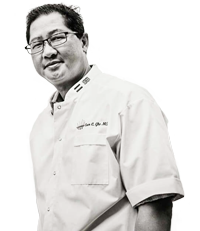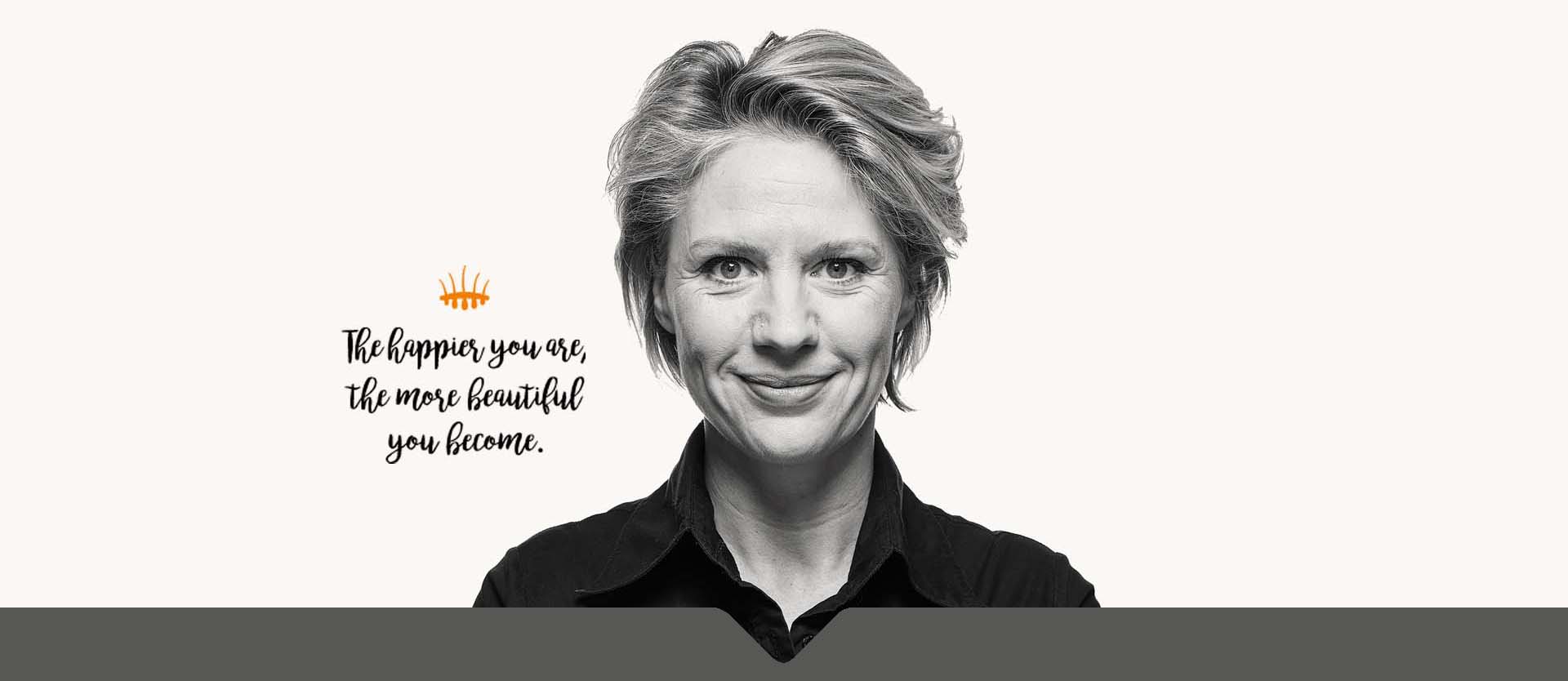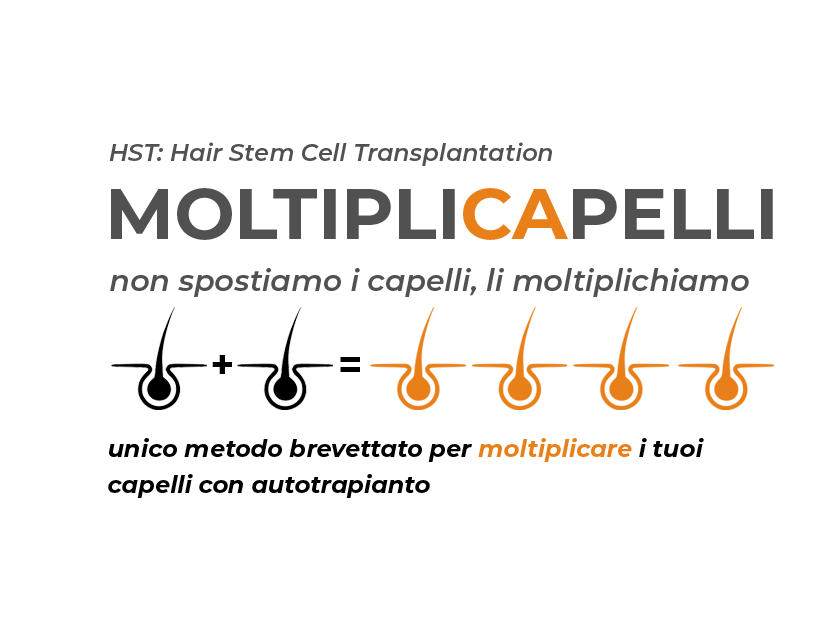
Hair stem cell transplantation with HST in vivo cloning
♦ A specialist consultation is necessary to determinate the exact cost of the operation
♦ The budget will not be less than €8000, evaluate your possibilities of budget
♦ Regrowth of donor zone, reusable several times, without points scars or long scars.
♦ No down time post-intervention, no bandages, you’re operational the very next day.
♦ Follicular unit multiplication by in vivo cloning.
♦ Young people can be treated with HST.
♦ When FUE is not feasible (insufficient donor zone) HST is the only possibility.
♦ The procedures are safer, performed in surgical block, not in ambulatory.
Call to organize consultation Hasci Italia at +39 331 78 16 625
THANKS TO THE REGENERATION OF THE DONOR AREA GRADUAL REPLENISHMENT CAN BE CARRIED OUT WITH DEVASTATED DONOR AREAS.
IF THE PATIENT HAS BEEN PRE OPERATED WITH OTHER TECHNIQUES (STRIP and FUE) LESS PARTIAL GRAFTS ARE LEFT AVAILABLE; THE INTERVENTION NEEDS THEN MORE TIME TO BE PERFORMED.
ACCORDING TO THE NORWOOD CLASSIFICATION, ONE OR MORE SUCCESSIVE INTERVENTIONS COULD BE ENVISAGED. STARTING FROM THE SECOND SUCCESSIVE PROCEDURE WE APPLY LESSER FEES, TO BE DISCUSSED CASE BY CASE.
THE NEW FOLLICULAR UNITS, FOR EACH PROCEDURE, WILL BE ABOUT THE DOUBLE OF THE NUMBER THAT HAVE INITIALLY PARTIALLY EXTRACTED.

“Everyone deserves to have beautiful and healthy hair”
For your hair transplants, hair stem cell transplant (HST) is the hair transplant technique that guarantees the best final result. Proven effective and performed exclusively in Hair Science clinics. Wouldn’t it be wonderful to experience the feeling of running your hands through thick, healthy hair again?

Dr. Coen Gho
Book a consultation with our center now.
Dr. Coen Gho’s long research is the strength of this method: his commitment to improving patients’ lives and his innate passion for science laid the foundation for the development of the hair stem cell transplanttechnique.
Coen Gho has dedicated his life to hair, stem cells and regenerative medicine. With universities and university hospitals around the world, he has been studying hair stem cells for thirty years. He is the inventor and holder of the patent called Partial Longitudinal Follicular Unit Transplantation, better known as Hair Stem Cell Transplantation (HST).

The Hair Stem Cell method
Hair Stem Cell Transplant uses the power of nature by tapping into the regenerative capacity of human stem cells. The peculiarity of this innovative technique is that only a small part of the hair follicle, rather than the entire follicle, is collected from the donor area. This small piece of tissue contains enough stem cells to grow new hair in the recipient area.
It is a small miracle : this regenerative capacity results in more hair from a single graft (hair follicle). The new grafts (hair follicles) are closely spaced, this creates a high hair density and a natural looking aesthetic line. A special patented storage solution stimulates growth and increases the vitality of the grafts giving them greater effectiveness. This integrated approach is the basis of our sophisticated hair transplantation method which increases hair growth in both the recipient and donor areas.
The method is extremely effective, with minimal scarring, high hair density and a completely natural end result.

Request a consultation
Call us to book a consultation during which we will discuss your personal situation and expectations. We will also be able to give you a clear picture of the costs. Of course you can ask all the questions about the hair stem cell transplant technique and share your doubts. Then, based on this consultation, we will develop an individual treatment plan. Consulting is as useful for us as it is for you.
In our clinic, like at home …
Hair Stem Cell Clinic uses the highest medical standards. But we also want to make you feel at home, completely at ease. This is why we will take care of you from your first appointment until the last check-up.
On the day of treatment you will be in the trusted hands of our dedicated specialists. Our team of experts will take care of the rest: a good lunch, a great hotel, a taxi, a little relaxation, a movie on Netflix … whatever is needed to make your treatment day as enjoyable as possible. You will leave our clinic happy, relaxed and content. You will leave our clinic happy, relaxed and content.
A look behind the scenes





Hair Transplant or Autograft
Also known as Autograft Hair Transplantation, hair transplantation is a surgical act aimed at transferring (transplanting) follicular units from an area of the head known as the donor area to the recipient area (the frontal line, or/and the vertex, commonly known as the cervix). Much more rarely, when the possibilities of harvesting from the donor area are insufficient, follicular units can be taken from other parts of the body, in which case the hair transplant is called Ectopic.
On average, a person with blond hair, under normal conditions, has about 140 000 hairs, albeit of a fine type. A brown or brunette has about 100 000 hairs, but of a thicker type than a blond. A redhead, on the other hand, has about 90 000, but of an increasingly thicker type.
The life cycle of hair
Hair loss
Transplantation techniques
There are various hair transplantation techniques. Quelle che prelevano il bulbo dalla zona donatrice e lo trapiantano nella zona ricevente con un semplice spostamento da A a B dello stesso follicolo (FUT, FUE). There is another technique that allows the follicles in the donor area to regenerate hair as they existed before the operation – the HST Hair Stem Cells technique. In this way, the hairs are multiplied in number and, if necessary, multiple transplants can be performed over time without depleting the donor area.
The FUT (Follicular Unit Transplantation)
FUT (Follicular Unit Transplantation) in the operating theatre a strip of scalp (STRIP) is taken from the donor area A suture is then applied, creating a scar in the sutured area which remains evident with short hair. It is a technique that has to be performed by experienced surgeons and is therefore costly due to the use of operating theatres and skilled surgical staff. This is a real surgery.
FUE (Follicular Unit Extraction)
With FUE (Follicular Unit Extraction), follicular units are taken from the donor area with circular scalpels (from a diameter of more than one millimetre to 0.8 millimetres). Sampling is performed manually or by robotic units. Depending on the diameter of the scalpel used, damage may be caused to the harvested follicular units or to adjacent ones. This has a certain impact on the amount of regrowth of the transplanted hair. A small scar is created for each extraction. All the scars made cause fibrosis of the scalp with hardening of the scalp. This often leads to limiting the number of subsequent interventions.
This technique is often carried out by novice doctors or even by less qualified personnel. The authorised operators are defined by the health regulations of the individual countries: in Italy, only qualified medical or nursing staff may intervene (operating theatre not required, but surgery is). Abroad, such as in Turkey, these regulations are less demanding and one can run into unqualified operators and unsuitable operating rooms that can put the patient at risk. The cost of operations that do not comply with the most demanding health rules is certainly lower than that of FUT (no operating theatre and less qualified staff) or FUE carried out in Italy. It is therefore necessary for the uninformed patient to beware of very low financial proposals for all the above risks.
HST (Hair Stemcell Transplantation)
HST (Hair Stemcell Transplantation) also called PL-FUT (Partial Longitudinal Follicular Unit Transplantation). This innovative and patented technique, which is the result of research by Dutch professor Conradus Chosal Gho, involves only partial extraction of the hair bulb. Specially designed surgical instruments measuring 0.5/0.6 millimetres are used.
Partial extraction contains only a minimal amount of epidermal tissue: the regrowth stem cells are exposed and present in both the partially extracted and the in situ portion. The non-removed portion of the bulb regenerates within a few months the same type of hair growth as before the operation. In contrast, the harvested part has the hair stem cells directly exposed to the environment. The sample is immersed in a patented medicine complex: to allow it to survive, the sample is otherwise extremely free of adipose tissue and therefore extremely thin.
This patented medium, which among other medicinal components contains exosomes, gives the sample the strength and energy needed to survive and take root in the recipient area. The survival rate of this type of transplant is very high at between 95 and 98%. Bleeding is extremely low, the 0.6 millimetre incisions allow very close and very natural density. No bandaging is done at the end of the operation, unlike all other techniques. Very small scabs form very quickly and fall off a few days after the procedure, which is particularly painless and does not, as with FUE and FUT, give rise to post-operative oedema.
As well as guaranteeing the multiplication of the number of hairs, this technique is the only one to guarantee the regrowth and regeneration of the donor area, thus allowing subsequent operations several months apart to be possible. Without the donor area suffering any of the injuries that FUT and FUE do. This technique is available in Italy, Switzerland and other European countries where the most stringent, strict and demanding health regulations are applied, both at the level of operators and at the level of intervention premises.
Request a consultation now



